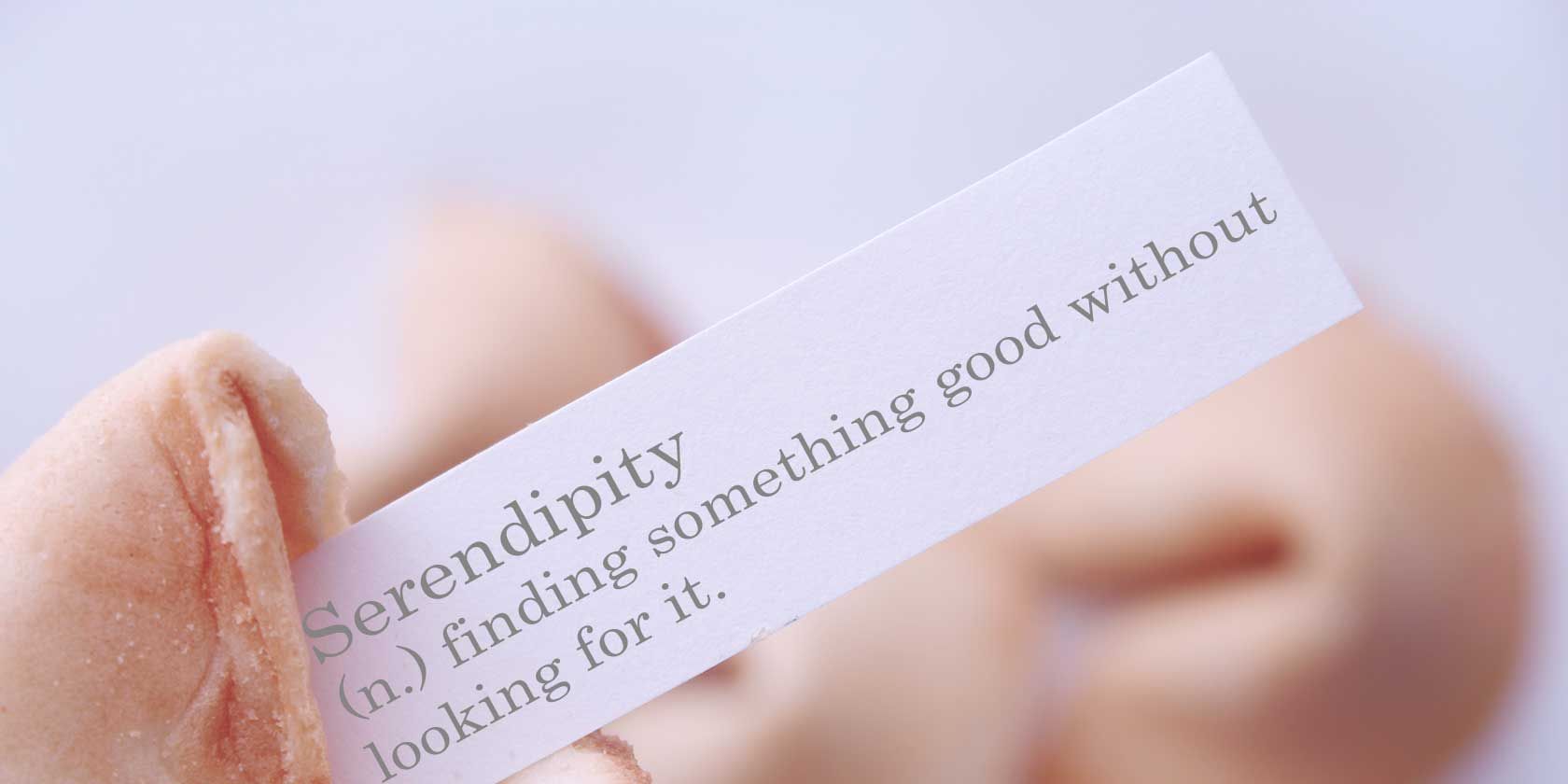Thank randomness.
We would be jelly-like protoplasm if some cells hadn't decided to try some random mutations at some point in time. Now that we are all fully formed, let's also thank it for cornflakes and LSD. Yes, they were fluke discoveries...but then there's a whole big list of others which also includes penicillin and basketball.
Now, thank serendipity. This lovely sounding word.
Creativity owes a lot to chance and accidental discoveries. Going by the popular anecdote of the fruit falling on Newton's head, give randomness some room for uncovering a few serendipitous ideas in your everyday lives.
Before you do that, remember that chance favors the prepared mind. Newton was working on the gravitational problem before the apple gave him more than a lump on the head. You are probably staring blankly at a computer screen trying to spark ideas and stimulate your creativity, or forcefully brainstorming alone on your desk. Let's look into the benefits of serendipitous browsing and try to connect some dots.
Aim For Serendipity In Your Browsing
Aimless browsing is useful for curing boredom, but adding a sprinkle of purpose to it can be the key to serendipitous browsing and chance ideas. The five possible benefits you can get...
- Take a second look at old problems in new ways.
- Set up odd and unexpected stimuli for spawning ideas.
- Expose yourself to the occasional idea you may not have thought of searching for.
- Open yourself up to ideas in bulk and get rid of tunnel vision.
- Hit pockets of serendipitous learning.
Foster and Ford did an empirical study in 2003 that looked at the role of serendipity in information search. They defined it as "fortuitous accidents" and say that some people are better at it than others. They also believe the social nature of the Web makes it easier to find and develop serendipitous connections.
Mislove, Gummadi, Druschel said this about "Exploiting Social Networks for Internet Search".
While browsing the Web, users often discover interesting information by accident, clicking on links that they had not intended to query for. This process, termed serendipity, is an integral part of the Web browsing experience.
In the real world, companies like Yahoo, Google, and Apple are thinking about workplace collision of ideas and engineering serendipity by creatively designing offices and organizational culture.
Steven Johnson, the author of Where Good Ideas Come From calls the exercise, "the importance of getting lost."
Tools For Online Serendipity – Browse Without Thinking Too Much!
A decade back we would have been diving into stacks of books at the local library. Today, the Web helps cure boredom with wild browsing. It is hypertextual and fast. And if you want to feel creative and give that aimlessness browsing a touch of purpose, you can have the pick of tools. Thanks to a glut of news discovery services (and recommendation apps) that are taking a different approach to the way we consume information.
I prefer mobile apps (iOS in my case) because I can lean back and let myself go; next to shower ideas, "couch ideas" come a close second for me. These are my four picks with unique serendipitous features.
StumbleUpon
The StumbleUpon iOS and Android apps have just been revamped. 500+ interests or categories should make for a lot of random browsing. Stumbling with the new app is now smoother. Access your interests and lists with a single tap. Find new, trending, and recommended lists based on your specific likes and interests.
StumbleUpon is not completely random because it recommends stories based on the interests you set up initially. But nothing is stopping you from giving the application a larger field to explore. You can just as easily stumble one single specific interest. Use the StumbleUpon algorithm like a revolving door to reach new places.
Don't forget the List feature, which allows you to organize and save the pages you really like. You can also subscribe to more than 20,000 lists set up by users. Use Discover to find new, popular, and recommended lists. Go to unrelated Lists to uncover new ideas.
For instance, as a tech writer I trawl through a list like Science to come up with new writing prompts.
Random
The neat StumbleUpon-like app started life with keywords floating in bubbles which you could combine or separate to form new connections. The app was freshly designed and now shows you colored blocks with keywords. It is a discovery engine and a browser rolled into one. Tap the blocks and go deeper into the layers of content...or out as it takes you to the edges of the areas you are interested in. Keep tapping the white block in the center to randomize and get to the keywords you are most interested in.
You don't need to log-in – definitely one of its best features so far is that it gives you some anonymity.
Daily by Buffer
We speak only good things about Buffer. The social scheduling app also gives us a way to randomly read interesting articles and add them to the Buffer queue. Daily is a super-fast way to trawl through read-worthy stuff. It is free on the App Store. The swipe card interface makes it easy to either read the post, share it via Buffer, or skip it.
The choice of subjects is a bit limited – generally around the same interests Buffer covers in its own excellent company blog. But if you are interested in marketing, technology, lifehacking, inspiration, startups, creativity and design, then this app is very useful to read the best ideas from the articles published.
The Accidental News Explorer
The Accidental News Explorer is a news app for iPhone (App Store | Cost: $1.99) that relies on chance encounters and serendipity. Search for a topic and read all the news on it. Beyond that, you can click on the Related Topics button to discover connected topics, which takes your news reading in fresh directions.
According to the developer -- the more curious you are, the longer your journey will be. Look at it as a straightforward news reader, or as a tool to get a 360-degree understanding of a subject and uncover the relatedness of information. That's a key ingredient for new ideas.
Try any content discovery app and tweak it to the genres of your interest. Think Prismatic, Flipboard magazines, or even random browsing on your own (try browsing with Google wildcards). Use them as filters for the noisiness of the Web. Make serendipity work for you by switching on a "discovery mode"...where you are interested in learning, reading for fun, and open to different kinds of content.
Use Serendipity For Productive Browsing
Serendipitous search for ideas and knowledge is just one of the tools in the quiver to hit new ideas. It is not an alternative to a systematic research based approach. After all, the number of accidental inventions pales in comparison to the sheer volume of breakthroughs that have come about because thinkers doggedly pursued their quest over years. But with a prepared mind, serendipity can glimmer around our everyday activities.
If you are a creative, it can come in the form of a new story prompt, a fresh angle to take for a photo, a color scheme inspired from nature, and even little bits of learning every day.
Finally, to get back to this beautiful word, here is the folk story behind serendipity.
Ideas are easy. Getting them to work is the hard part. Are you an "idea person? Have you faced creative blocks and flattened it with serendipitous browsing? Which is the method you tap into?
Give us your comments and stories.
Image Credit: Fortune (Shutterstock)




